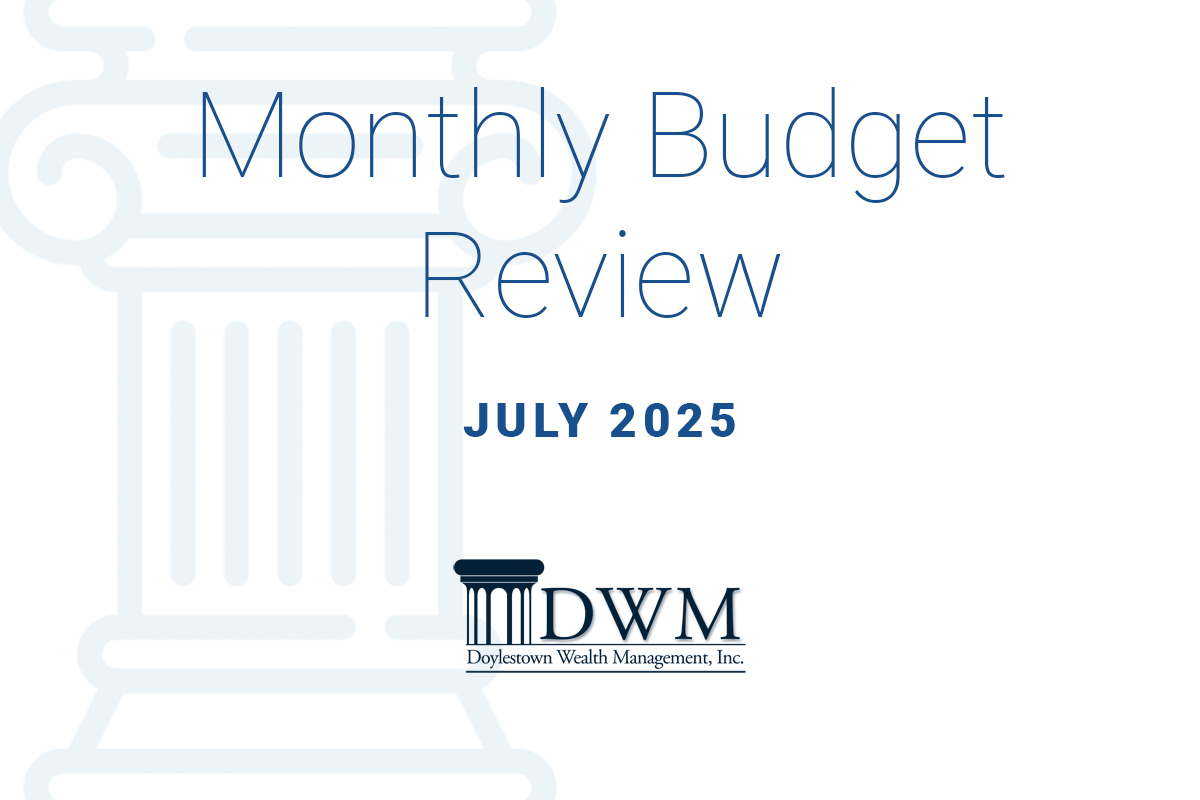

The passage of the budget bill has spawned a series of headlines projecting anywhere from 3.5 to 4.5 trillion dollars of increased deficit as a result over the next ten years. But as we pointed out last month, this comes on top of a projected baseline deficit of $22 trillion, meaning that the story really ought to be that the federal government will average a $2.5 trillion annual deficit over the next ten years. We remember not so long ago when a trillion dollar deficit was viewed with horror—in fact, it was constantly alluded to as a reason why we couldn’t invest in infrastructure or top up the Social Security Trust Fund.

It is difficult to avoid the conclusion that there is always money available to do the things that The Powers That Be really want to do, and always excuses available to not do what they don’t want to.
The Big Bucket
Your humble commentator is occasionally invited to meetings where he can listen to the Chief Economist or Grand Strategist from one investment firm or another pontificate on the State of Affairs. Frequently, these wise men (they are almost always men) throw up a slide illustrating the growth of government spending as a preamble to bemoaning the continual growth of Washington’s outlays with the suggestion—sometimes implied, most often not—that this portends some future calamity, most easily summarized under the title of Socialism. It is easy to make a career of this kind of “analysis” without worrying too much about the details. But federal spending stems from disparate causes, and ignoring this is folly.
Some government spending is for current expenses to be sure, but some is for capital goods and infrastructure, and some is return of investment. Likewise, some government inflows are revenue, and some are contributions to custodial funds. It is a fundamental misrepresentation to lump these functions together as Spending and Revenue, although it is done all the time. Why? Perhaps because the Treasury itself makes little distinction between money it collects for the Social Security and Medicare Part A trust funds and the rest of its receipts. As we have mentioned many times before, the US Treasury in effect has only one checking account (held at the Federal Reserve Bank). All of its collections, earnings, and other revenues are placed there. All of its spending—for current expenses of government operations, subsidies of various kinds, and payments to various pension and health care recipients come from it.
This accounting system is primitive in the extreme—one wouldn’t operate any business entity in that manner, with no distinctions between money spent to fulfill obligations and supposedly held in custodial accounts, capital expenditures, ordinary expenses of operation, and subsidy distribution to companies and individuals. Likewise, funds received are not divided into categories depending on whether they are intended to pay current expenses, to fund capital improvements, or to be held to meet future pension and health care obligations.
Some might argue that although the Treasury does collect all the payments, it eventually gets around to depositing Social Security and Medicare Part A taxes in separate trust accounts (not based on actual payroll data but on an estimate of what those collections were) But these two trust funds, along with the federal and military employee retirement funds, the highway fund, and a myriad of other buckets, can only be invested in federal debt. In essence, the federal government keeps the money and stuffs an IOU in the file cabinet (or lockbox, if you prefer) which is an accounting maneuver that companies used to engage in prior to the 1970’s, when a slew of bankruptcies involving defaulting on pension promises led to the passage of ERISA and the establishment of the familiar retirement investing structure as we know it— separately managed pension funds forbidden from investing in the stocks or debt of their own companies.

The federal government is not a company, of course, and should not necessarily operate in the same manner as one (there are very good reasons why it shouldn’t, mostly stemming from the tenet that government’s primary concern should be the needs of its citizens and not profit maximization—the customers and not the shareholders, as it were.) But the current rudimentary accounting leads to a myriad of misunderstandings and bad conclusions that are generally seized on by ideologues to “prove” their preconceived notions. If we really want to engage in a discussion of whether or not spending is out of whack with revenues, we should consider the operations of the pension and retiree health care benefits (that is, Social Security and Medicare Part A, along with the military and federal employee systems) as standalone operations. It is entirely disingenuous to throw up a slide with a chart showing the rise in federal spending without considering that much of it is due to the payouts of these (supposedly) custodied funds. And, after all, paying out Americans’ contributions to retirement funds with a fair return doesn’t seem like Socialism—it sounds like Capitalism to us.
The opinions voiced in this material are for general information only and are not intended to provide specific advice or recommendations for any individual.
The content is developed from sources believed to be providing accurate information.
Securities offered through LPL Financial, member FINRA/SIPC. Investment advice offered through Great Valley Advisor Group, a Registered Investment Advisor. Great Valley Advisor Group and Doylestown Wealth Management, Inc. are separate entities from LPL Financial.
